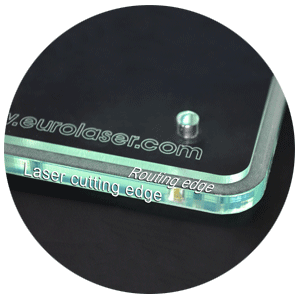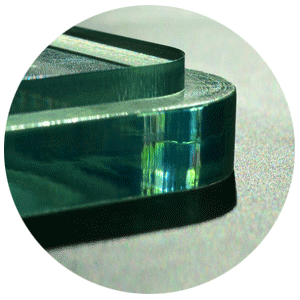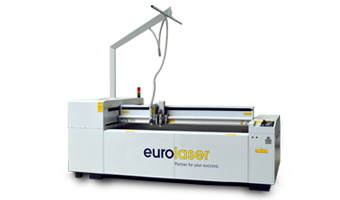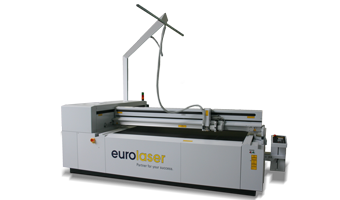Further CO2 laser cutter for the processing of PMMA (PLEXIGLAS®)

Traditional requirements for the machining of acrylic glass:
- Polished high-shine cut edges
- Removal of material for pockets, grooves, blind holes, or the use of LEDs
- Filigree geometries
- High-resolution engraving and creation of reliefs
- Gentle processing of printed acrylic

Our example demonstrates the machining of a 10 mm acrylic glass sheet (glass look). The cut outer edge and the inner contours of four bore holes should be polished to a shine, without costly postprocessing. Besides, a sunken border at the outer edge is also required, which creates a stepped profile. Filigree engraving is applied as a refinement.
The routing module and a Rofin laser with a laser power of 400 Watt, mounted on the eurolaser system XL-1600, are used to manufacture this sign. Both tools are installed in parallel and used in a single operation.
For further information please click the links below:

First of all, the routing module is used to create a groove which is 6 mm wide and 2 mm deep. The required lettering is then applied using laser engraving. Afterwards, the four holes and the outer edge are laser cut. In order to create the stepped profile, cutting takes place in the groove that has already been routed. The edge is immediately polished to a shine as a result of the laser cutting.
The diverse requirements of this application show the flexibility you can gain from a combination of routing and laser tools on one machine. Since both tools are used in a single step, it only takes about 70 seconds to produce this sample sign (104 x 104 mm).
Do you have any questions? We are pleased to advise you.




